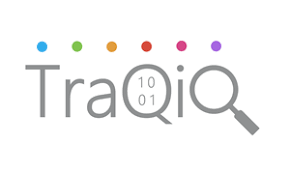What is a gig? A term that originated in the music business now represents a form of employment that has been impacting scored of business (and employment) models around the world. We have all used contractors in some form. We have hired people for a couple days to make a modification to our house, and we may have hired someone to build a website or write some software. These “contractor” type of employment models has been around for a long time – some last for hours, and some for months.
Let's look at 2 very specific scenarios where this flexibility is powerful.
One example comes from the Technology universe. Amazon’s EC2 elastic computer service lets their customers rapidly add/reduce capacity depending on their needs. No need to buy servers, etc. Press a button and you have a few hundred more boxes (or equivalent) instantly!
The second example comes from the people universe. When millions of people hit Las Vegas at an event Like CES, thousands of Uber and Lyft drivers supplement the conventional taxi service.
Companies like Uber have become the poster child for this, even though Taxi services have existed for a long time. The same thing applies to office space – WeWork made some economic and management mistakes, however, their impact on how we evaluate and manage office space is very long term.
The gig economy is a very broad representation of the flexibility that we seek. It is currently represented via temporary, or freelance jobs, often involving connecting with clients or customers through an online platform or mobile app. These assignments are typically very short term or adaptable and fulfil a very targeted need. The Uber business model started as short gigs and now a large part of their workforce works full-time. Compensation continues to focus on payment for every ride/task completed.
Another great example is Mimo-Technologies in India. The company has built a network of over 10,000 task workers across semi-urban and rural India. Their “agents” deliver documents, small packages and also collect payments. In addition to being very successful commercially, the company is also serving a very significant social need – they provide employment to thousands of people who may have a high school education (at best) and provide a significant boost to the local economy.
The gig economy can benefit workers, businesses, and consumers by making work more adaptable to the needs of the moment and demand for flexible lifestyles. There’s no denying the growth of the gig economy. Economists estimate that the portion of U.S. workers earning a living as independent contractors, freelancers, temps, and on-call employees jumped from 10% in 2005 to nearly 16% in 2015, and the trend shows little sign of slowing. It is estimated that by 2027, 60% of the workforce will be independent professionals.
TraQiQ offers a software platform that can power the distribution engine for the new economy. It brings together the software needed for Last mile delivery, agent management, customer analytics, payment mechanisms and geo-tracking. It is a platform tested by multiple customers, thousands of agents and has had billions of dollars of transactions flow through it.



